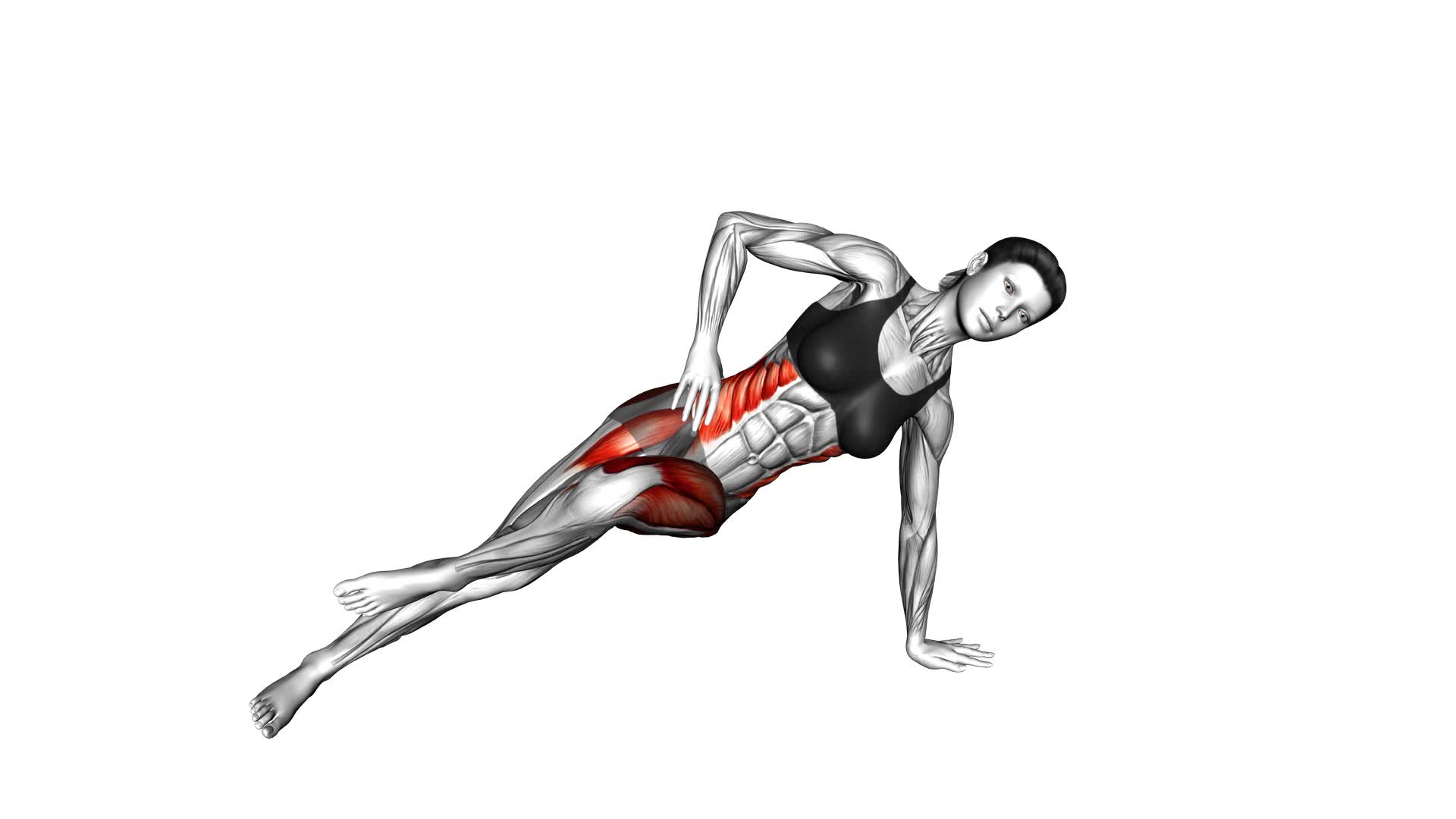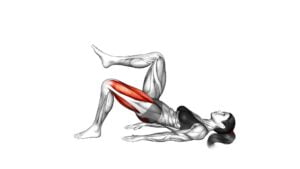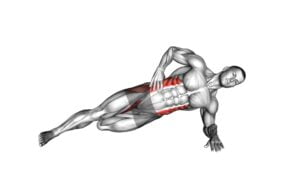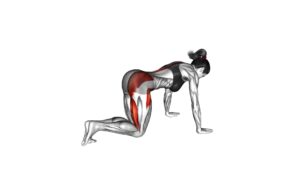Side Bridge (Bent Knee) (Female) – Video Exercise Guide & Tips

Are you looking for a quick and effective exercise to target your core muscles? Look no further than the Side Bridge (Bent Knee) exercise!
Watch This Exercise Video
In this video exercise guide, we'll show you the proper form and technique, as well as variations and common mistakes to avoid.
Whether you're a beginner or advanced, this exercise will help you strengthen your core and improve your overall stability.
Get ready to feel the burn with this challenging yet rewarding exercise!
Key Takeaways
- The side bridge exercise improves core strength and enhances body stability.
- Engaging core muscles throughout the exercise is important for proper alignment and stability.
- Proper form and technique, such as avoiding hip sagging and maintaining body alignment, should be followed to maximize effectiveness and prevent common mistakes.
- Variations of the side bridge exercise can be incorporated to challenge different muscles and increase the difficulty level.
Benefits of the Side Bridge Exercise
Experience three key benefits of the Side Bridge exercise.
This exercise is highly effective in improving core strength and preventing lower back pain. By regularly incorporating the Side Bridge into your workout routine, you can reap these benefits and improve your overall fitness.
Firstly, the Side Bridge is a fantastic exercise for strengthening your core muscles. As you hold the position, your obliques, abdominals, and lower back muscles are engaged, working together to stabilize your body. This helps to improve your posture, balance, and overall core strength. A strong core is essential for performing daily activities, as well as enhancing athletic performance in sports and other physical activities.
Secondly, the Side Bridge exercise is excellent for preventing lower back pain. By targeting the muscles in your core, particularly the obliques and lower back muscles, this exercise helps to stabilize and support your spine. This can alleviate pressure on the lower back and reduce the risk of developing chronic pain or injuries in this area.
Lastly, the Side Bridge exercise also helps to improve overall body stability. By strengthening the muscles responsible for stabilizing your body, you can enhance your balance and coordination. This can be particularly beneficial for athletes, as well as individuals who engage in activities that require stability, such as yoga or Pilates.
Incorporating the Side Bridge exercise into your workout routine can provide significant benefits, including improved core strength, prevention of lower back pain, and enhanced body stability. Make sure to perform this exercise correctly and gradually increase the duration and intensity to maximize the benefits.
Proper Form and Technique for the Side Bridge Exercise
To perform the Side Bridge exercise correctly, follow these proper form and technique guidelines.
- Start by lying on your side with your legs extended.
- Place your forearm on the floor directly underneath your shoulder, keeping your elbow bent at a 90-degree angle.
- Engage your core and lift your hips off the ground, creating a straight line from your head to your feet.
- Keep your body in alignment and avoid sagging or rotating your hips.
- Hold this position for the desired amount of time, then lower your hips back down to the starting position.
When performing the Side Bridge exercise, there are a few common errors to avoid.
- First, make sure to keep your body in a straight line and avoid letting your hips sag or rotate.
- Also, be mindful of your shoulder position and avoid shrugging or hunching them forward.
- It's important to maintain proper alignment throughout the exercise.
For progression options, you can increase the challenge of the Side Bridge exercise by adding variations.
- One option is to lift your top leg off the bottom leg, creating a staggered stance.
- This adds an element of instability and engages your hip muscles even more.
- Another option is to lift your top arm off the floor and reach it towards the ceiling, adding an upper body component to the exercise.
Variations of the Side Bridge Exercise
To add variety and challenge to your Side Bridge exercise routine, there are several variations you can incorporate. These side bridge progressions and modifications will help you target different muscles and increase the difficulty level of the exercise. Here are three options to try:
- Extended Arm Side Bridge: Instead of resting on your forearm, extend your arm straight up towards the ceiling while maintaining proper alignment. This variation engages your shoulder and upper back muscles to a greater extent.
- Side Plank with Leg Lift: Start in a side plank position and lift your top leg towards the ceiling. This modification adds an extra challenge to your core and hip muscles, as well as improves balance and stability.
- Side Bridge with Hip Dip: Begin in a side bridge position and lower your hip towards the ground, then raise it back up. This movement targets the oblique muscles on the side of your waist and enhances core strength and stability.
Incorporating these side bridge variations into your workout routine will keep your muscles guessing and help you progress towards your fitness goals. Remember to maintain proper form and technique throughout each variation to maximize the benefits and minimize the risk of injury.
Common Mistakes to Avoid During the Side Bridge Exercise
To avoid common mistakes during the Side Bridge Exercise, focus on maintaining proper form and technique. One of the most common mistakes is allowing your hips to sag or droop. This can put excessive strain on your lower back and diminish the effectiveness of the exercise. To prevent this, engage your core muscles and keep your body in a straight line from your head to your heels.
Another mistake to avoid is lifting your top leg too high. While it may seem like you're increasing the difficulty, it actually shifts the focus away from your core and places it on your hip muscles. Instead, keep your top leg in line with your body to ensure maximum engagement of your core muscles.
Lastly, avoid collapsing your shoulder or letting it roll forward. This can cause shoulder strain and compromise your form. Keep your shoulder stacked directly above your supporting elbow.
By avoiding these common mistakes and maintaining proper form, you can maximize the effectiveness of the Side Bridge Exercise.
Transitioning into the next section, let's explore some tips for further enhancing the benefits of this exercise.
Tips for Maximizing the Effectiveness of the Side Bridge Exercise
Maximize the effectiveness of your Side Bridge Exercise by incorporating these tips:
- Progress gradually: If you're new to the Side Bridge Exercise, start with the basic variation and gradually increase the difficulty level as you get stronger. Begin by holding the position for a shorter duration and gradually work your way up to longer holds. You can also increase the challenge by adding variations such as lifting your top leg or arm.
- Engage your core: To maximize the effectiveness of the Side Bridge Exercise, focus on engaging your core muscles throughout the exercise. Keep your abs tight and your hips lifted to maintain proper alignment and stability. This won't only target your obliques but also strengthen your entire core.
- Modify as needed: If you're finding the Side Bridge Exercise too challenging, don't be afraid to modify it. Start by bending your knees and resting on your bottom knee instead of your feet. This will reduce the load on your core and make it easier to maintain proper form. As you get stronger, gradually straighten your legs and progress to the full Side Bridge position.
Frequently Asked Questions
How Many Calories Does the Side Bridge Exercise Burn?
The side bridge exercise is a great way to burn calories and strengthen your core. It targets your obliques, glutes, and shoulders, making it a full-body workout.
For beginners, it's important to start with proper form and build up strength gradually. As you progress, you'll be able to hold the position for longer periods of time, increasing the number of calories burned.
Can the Side Bridge Exercise Help Reduce Belly Fat?
The side bridge exercise, along with its variations, can be a helpful tool in reducing belly fat. This exercise targets the core muscles, including the obliques, which can help strengthen and tone the abdominal area.
Compared to the traditional plank, the side bridge specifically targets the side muscles, providing a more focused workout for the obliques.
Incorporating side bridge exercises into your routine can contribute to overall fat loss and a more defined waistline.
Is the Side Bridge Exercise Suitable for Beginners?
The side bridge exercise is a great choice for beginners looking to strengthen their core. It can provide numerous benefits, such as improving stability and balance.
If you're new to this exercise, don't worry! There are modifications you can make to make it more manageable.
Incorporating side bridge variations with bent knees can help you gradually build strength and work your way up to the full exercise.
How Often Should the Side Bridge Exercise Be Performed to See Results?
To see results from the side bridge exercise, it's important to consider the frequency and duration.
When it comes to how often you should perform the side bridge, consistency is key. Aim for at least 2 to 3 times a week to give your muscles enough time to recover and adapt.
As for the duration, start with 30 seconds on each side and gradually increase the time as you get stronger. Remember to listen to your body and adjust accordingly.
Can the Side Bridge Exercise Improve Posture?
Yes, the side bridge exercise can definitely improve your posture.
By incorporating this exercise into your routine, you can strengthen your core muscles and improve flexibility.
This will help you maintain proper alignment and support your spine, leading to better posture overall.
Conclusion
In conclusion, the side bridge exercise is a beneficial workout for strengthening the core and improving stability. By maintaining proper form and technique, you can maximize its effectiveness.
There are also variations available to challenge yourself further. Avoiding common mistakes is crucial for avoiding injury.
Incorporating the side bridge exercise into your fitness routine can help you achieve your goals and enhance overall fitness.

Author
Years ago, the spark of my life’s passion ignited in my mind the moment I stepped into the local gym for the first time. The inaugural bead of perspiration, the initial endeavor, the very first surge of endorphins, and a sense of pride that washed over me post-workout marked the beginning of my deep-seated interest in strength sports, fitness, and sports nutrition. This very curiosity blossomed rapidly into a profound fascination, propelling me to earn a Master’s degree in Physical Education from the Academy of Physical Education in Krakow, followed by a Sports Manager diploma from the Jagiellonian University. My journey of growth led me to gain more specialized qualifications, such as being a certified personal trainer with a focus on sports dietetics, a lifeguard, and an instructor for wellness and corrective gymnastics. Theoretical knowledge paired seamlessly with practical experience, reinforcing my belief that the transformation of individuals under my guidance was also a reflection of my personal growth. This belief holds true even today. Each day, I strive to push the boundaries and explore new realms. These realms gently elevate me to greater heights. The unique combination of passion for my field and the continuous quest for growth fuels my drive to break new ground.







